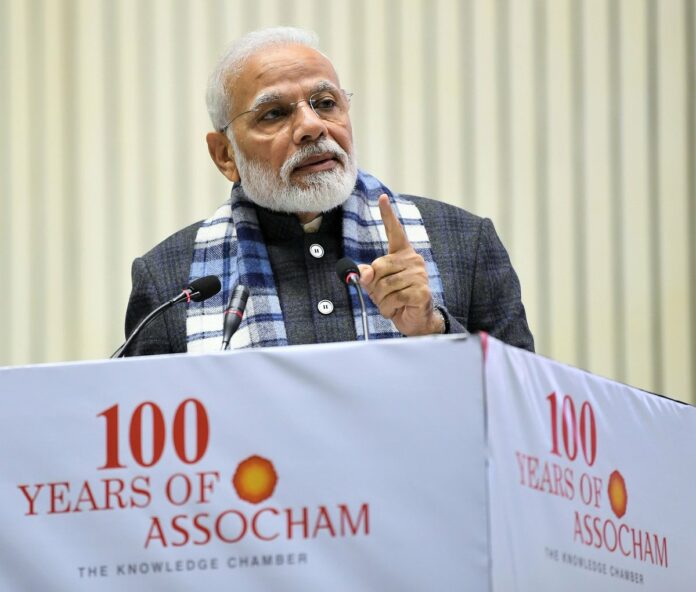Chronicling evolution of the chamber posits the advantage of stating at the outset, the schematic unfolding of the tapestry of events that eventually concluded in contrasting interests federating into a coalition of mercantile consolidation.
Against this backdrop, the birth of the Associated Chambers of Commerce of India and Ceylon in 1920 was more than an event – it marked the culmination of a historical process reflecting an age of tumultuous change, a logical, sequential development of the coming together of associations primarily representative of British commercial interests in different parts of the country. While the seed of such a formalised structure was evidently sown by the Calcutta Trades Association, as British trading interests tried to weave themselves into a body, on the lines of the more sophisticated business chambers back home, the Bengal Chamber of Commerce, duly supported by Madras and Bombay chambers, was the prime moving force in the establishment of first-ever apex chamber in India.
The industrialization pattern then obtaining under the British largely influenced the need for collective protection of local business interests along with the mounting inevitability of restructuring neglected sectors and concurrently promoting entrepreneurship. The Chamber movement mirrors a paradox where British manufacturers saw in India a captive market for their goods but the British Indian manufacturers found such move emaciating their growth. Calcutta being the seat of govermnment from where functioned the Legislative Council conferred on Bengal Chamber legitimate proximity gains for interface and enunciation of its needs. Expansion of the representative character of the Council by the new law, that amended the Indian Councils Act in 1909, prompted the Bombay and Bengal Chambers to seek allotment of representative membership in the Council.
The parallel growth of industries had a direct deportment on the chambers. The indigo, tea, jute, cotton textile industry, coal, thermal power generation and the growth of engineering units with British and Indian interests defined the expansion of converging interests. The partition of Bengal in the year 1905 not only gently catalyzed emergence of a cohesive political opposition but also lent the first impetus to conceiving an all-India entity when the captains of industry from the provinces, Ceylon and Burma discussed the necessity of national bonding. Twelve years later, at another such gathering again in Calcutta, in the wake of post-war scenario, the inspiration for a national business organisation was cemented specifically in response to the integration of economic policy into an all-India pattern, an enlarging corpus of legislation, the rapid growth of Indian business, a sharper spirit of trade rivalry, as well as the mobilization of important Indian industrial financial support for political purposes. The idea of an all-India organisation was certainly prompted by the lessons of the war but the transfer of capital to New Delhi in 1911 circumscribed the possibility to continue to profitably lobby with the Government primarily on the Bengal Chamber’s strength.
ASSOCHAM’s maiden conference opened at the Royal Exchange, Calcutta, on Thursday, January 8, 1920, at three in the afternoon. Lord Chelmsford inaugurated it with the Governor of Bengal, the Earl of Ronaldshay anon, in the presence of the commercial and official elite.
ASSOCHAM was more than a chamber for its members; it served as stimulant to other business groups to close ranks. Primarily, it inspired the “Indian” sector, which looked at ASSOCHAM as an example of British business interests lobbying on a national scale and creating the wherewithal for smooth progress.
Association of Chambers of Commerce of India and Ceylon started with 13 Chambers as its original members. These were Bengal Chamber of Commerce, Bombay Chamber of Commerce, Burma Chamber of Commerce, Ceylon Chamber of Commerce, Chittagong Chamber of Commerce, Cochin Chamber of Commerce, Cocanada Chamber of Commerce, Karachi Chamber of Commerce, Madras Chamber of Commerce, Narayangang Chamber of Commerce, Punjab Chamber of Commerce, Tuticorin Chamber of Commerce and Upper India Chamber of Commerce. PHD Chamber of Commerce Industry (PHDCCI), working since 1905, joined ASSOCHAM as its promoter chamber in the year 1922. The Indian Merchants’ Chamber, Bombay, then in its eightieth year, joined ASSOCHAM as one of its promoter chambers in 1987.
In the same year, the new articles of the Association for ASSOCHAM were worked out and the membership structure of the Chamber was categorized into Promoter Chambers, Patron Members, Ordinary Members and Corporate Associates. For the first time ASSOCHAM also opened itself up for overseas membership. Besides, the managing committee reconstituted to have a President, Senior Vice President, and Vice President and three deputy Presidents, to be advised by forty-member apex advisory body. Not only large industry and trade but also small and medium industrial enterprises, engaged in agriculture and transport, as well as professional bodies and several new industry associations entered ASSOCHAM’s fold.



















